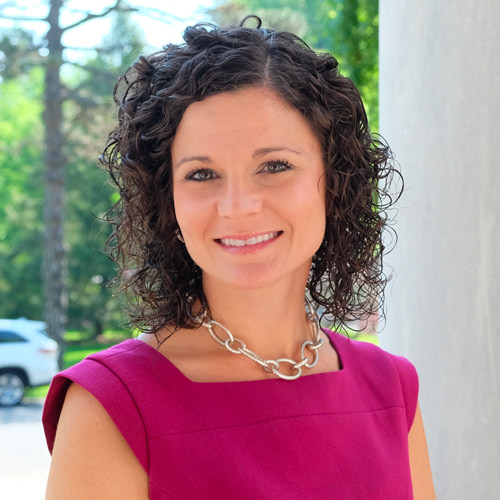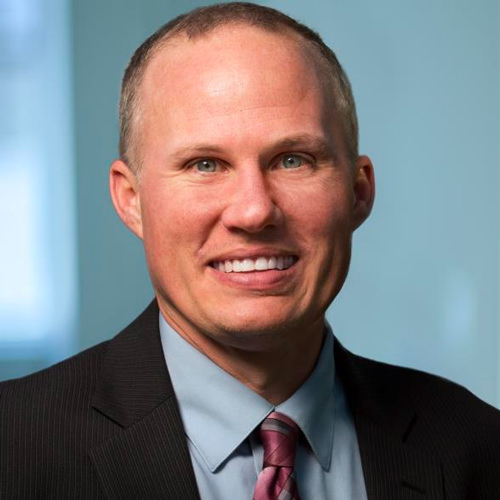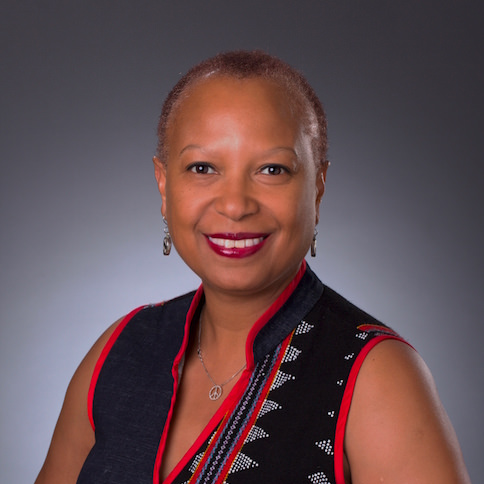
The Great Resignation is hitting colleges and universities especially hard. Even before the pandemic, retention of the best staff and faculty was a growing concern, given the lure of higher pay in the corporate sector, competition between academic institutions themselves, and increased and continual pressure to do more with less in the academic workplace. The COVID-19 pandemic worsened these challenges by severely depressing departmental budgets, demanding rapid transitions in the way higher-ed professionals pursue their work and deliver services to students, and by exposing and deepening workplace inequities, particularly for women and for faculty and staff of color. A recent survey that we conducted found that nearly half of respondents reported feeling clinically meaningful levels of burnout, not far off from the working population at large. Today, when we speak with human resources professionals in higher ed, they frequently share their frustration (and sometimes even fatalism) at what many see as a long and losing battle to hire, retain, and develop top talent for their institutions at a time when higher education is seeing unprecedented brain drain toward private industry and when the prospect of working together toward a common good is no longer enough, by itself, to attract and keep talent.
However, there is much that human resources directors and talent managers can do to turn this ship. It does require rethinking both the approach and practice of hiring and developing talent. Old saws no longer hold true (if, indeed, they ever did), and old practices are no longer just outdated but perhaps decrepit and in need of retiring. To explore how higher education can compete with private industry for the talent needed to help our institutions and their students thrive in the years ahead, we spoke with four seasoned HR leaders:
 Audra Kahr, Chief Financial Officer at Cedar Crest College
Audra Kahr, Chief Financial Officer at Cedar Crest College
 Jami Painter, Associate Vice President and Chief Human Resources Officer for the University of Illinois system
Jami Painter, Associate Vice President and Chief Human Resources Officer for the University of Illinois system
 David Forgues, Vice President for Human Resources, Diversity and Inclusion at California State University, Fullerton
David Forgues, Vice President for Human Resources, Diversity and Inclusion at California State University, Fullerton
 Adrienne Harrell, Learning and Talent Development Manager at the University of California, Santa Cruz
Adrienne Harrell, Learning and Talent Development Manager at the University of California, Santa Cruz
Here’s what they shared with us.
Academic Impressions. First, the obvious question: How did we get here, and what do we need to recognize about what has changed for human resources in higher ed?
Audra Kahr. For so many years, employment in higher education was a long-term destination that many individuals sought and in which they saw incredible value. Positions filled quickly; we saw a long list of qualified applicants and required multiple rounds of interviews to narrow down the top candidate pool. What made higher ed so attractive was the flexibility and work/life balance that colleges and universities provided to individuals and even their families. It was not uncommon for institutions to have 35-45-year employees, both faculty and staff, but also many mid-career transitioning employees, who sought the laid-back lifestyle after years of pushing margins, sales, and unlimited hours on the clock. Higher education received the best and brightest from so many industries and those skill sets transformed the workforce in higher education. Over time, these individuals increased the speed of work, productivity of the workforce, drove margins and profitability, added advanced degrees, and looked for efficiency. The pace in higher education over time had increased its speed, a direct result of its employees. The benefit of higher education was that even under the increased expectations, the flexibility remained, the extra add-ons had a value and employees sought additional advanced degrees that added to their portfolio.
Enter the pandemic, a virus that essentially shut down campuses and operations and required a swift and immediate switch to online delivery methods of course content, but also essential work functions. Employees now worked remotely using whatever method of technology was available to them to continue to remain productive. In many cases, the abrupt closure of campuses meant employees using their own personal methods of technology as their “work” office was off-limits. Employees and supervisors became creative to keep operations moving forward, but in most cases without a rubric or guide as to how employees were meeting their goals and those of the institution. Supervisors managed through, as there was no guidebook to explain how to navigate these waters. In fact, the pandemic brought about immediate and swift cuts of positions and jobs on every campus nationwide. Employees were doing more with less as sharp losses in revenue were impacting budgets in every way possible.
The hardest question to answer has been: How well have we managed through it? There is no one straight answer for higher education. Given that we were building the plane as we were flying it, we navigated the challenges the best way we could. Do we know in what areas we might have underdelivered? In some cases, yes. In most cases, not really. Each of our campuses were trying to stay afloat and above water, getting by day-to-day. In the effort to maintain a regular, consistent work environment, we lost focus on tracking what was most important for the institution to thrive. And in that lies our dilemma. Industry was tracking those metrics; they have always had those metrics for evaluating performance and productivity. In fact, those same metrics and the pressures they create drove many mid-career individuals to higher education in the first place. The only difference now is that industry is offering the same high-pressure work but in a fully remote environment. Same expectations, different office.
The struggle for higher education is that our office is where the students are. Fully residential campuses and campuses that have a high proportion of in-person educational offerings have a requirement to be present for the student. Part of what sells the campus to a prospective student is the hands-on education and experiences they are expecting to receive. They and their parents are expecting certain outcomes for the cost they pay. This does not need to be flashy or extravagant, but for many it is important that these experiences occur face-to-face and not behind a screen. Today’s workforce understands being flexible to mean working from home full-time. For higher education, that is not possible unless you provide a fully online education.
Jami Painter. Higher education, historically, has not kept pace with our private sector competitors in talent acquisition and management. The pandemic has brought to light some of our rigid policies and practices around remote work and flexible schedules. If we do not figure out how to deliver the same level of service and education to our students while offering more flexibility and options for hybrid work, we will lose highly talented applicants and employees to companies who will. Being flexible does not mean your service and deliverables have to suffer. Higher ed is known for being cutting-edge for new inventions and discoveries; we need to also be known for being the benchmark and leader in employee development, engagement, growth, and satisfaction.
Academic Impressions. Let’s talk about how. When it comes to retaining and developing talent, what are tangible ways that higher ed can compete with private industry?
Audra Kahr. Despite the challenges, all hope is not lost. There are still ways to remain competitive and forward-thinking and to retain your talent:
- Begin with retention of your employees. The cost to replace a high-performing team member is far greater than the cost to invest in them. Review your talent pool and identify those high performing team members who add value to your organization. Adding value is not just doing the day-to-day work; recognize those who step up and out regularly. Those are likely the same individuals being sought after by companies. Make sure these individuals know and understand their value to your organization. Invest in their professional growth and development. Identify training and opportunities for them to speak on behalf of your organization. Create opportunities for their growth internally. Find ways to create flexibility that works for both your high performers and for the institution overall.
- Succession planning is critical to the success of any organization. Critically evaluate your organization. Do you have the people in place to carry out your mission? If so, wonderful. How are you going to maintain their growth potential? Is this someone whose departure would negatively impact the organization? Is there reasonable opportunity for them to grow within the organization relatively soon? How will you keep them engaged and relevant? All important questions to ask. Higher education moves slowly, and people typically transition slowly; therefore, if you have an all-star employee, you are not the only one seeing their abilities, and they will be the first one picked from the bunch if you are not invested in them.
- Communicate frequently with employees. Transparency is important to people’s well-being. Being part of the solution invigorates people’s willingness to do more. So often, leaders try to solve the problem without conversation or consultation. This then leads to employees feeling that their opinion is undervalued or not important. That becomes another reason for employees to look outward for new opportunities.
- Provide training and support. Not all supervisors are ready to be supervisors, and they need tools to help them be successful. They need training on how to have crucial conversations, how to evaluate performance, and how to be better and stronger managers. So often, we assume that everyone is ready for a leadership role. What if their prior leader was not the best role model of leadership? In that scenario, they will have learned by default and will then practice the same leadership traits, even if they disliked that environment. We learn by what we are exposed to. Help and encourage good leadership, because the data indicates that employees with poor supervisors are less engaged, and that they are more likely to leave because of the supervisor, not necessarily because of any dissatisfaction with the institution.
- Articulate the benefits of employment in higher education clearly. Certainly, higher education does not provide a 100% remote work opportunity in most cases, but the full compensation package in its entirety is far greater than the full compensation package in industry. Much of what makes higher education positions desirable is in the benefits. Vacation time and sick time are distinct from each other not, combined into a personal time off format (PTO), which provides greater time away from the office. We have defined contribution plans with significant matching funds, stronger health care plans that cover the unexpected sickness at better costs, educational opportunities at the graduate and doctoral levels for employees and potentially for their spouse, and undergraduate tuition remission for dependent children. Show the numbers. Show the value.
- Refrain from being reactive. Resist the pressure to move in a direction that inherently is not workable at your institution. Know your strengths. Match your strengths to your mission. It is likely you will have increased salary expenses over the next year; competition and inflation are putting pressure on us all to pay more. When you engage in reactive behaviors, you do not evaluate what might work better for your organization. Reactive behaviors typically involve retrofitting practices that others have deployed. That is like fitting a square peg into a round hole. It never works the way you intended it to.
- Live your mission. Employees are acutely aware of deviations from the mission. They likely selected your organization because of their attachment to the mission. When you stray from it, people notice. Stay true to who you are.
Of course, the easiest answer in this is to put more money towards the problem. But that really does not solve the underlying issue of how to retain and hire at your organization. Constant revolving positions signal deeper issues that must be addressed. Be open and aware and willing to change. After all, flexibility and resilience are what got us this far.
David Forgues. Flexibility is key. Our staff have proved to us over 18 months that they can do their jobs remotely. Prior to the pandemic, we were always going to be a primarily in-person institution. We did not telecommute, and this had previously put us at a competitive disadvantage. Now, the majority of our employees do telecommute, at least one to two days per week. That 1-2 days make a big difference for people. Some positions don’t lend themselves well to that, but many do. IT, for example. A lot of IT positions are fully remote: the back of the house, the programming staff, even the help desk/call center staff. When we say, Yes, you can telecommute three days, we get a win/win. It’s a win for the employee, and it also means we’ve expanded out the service that we’re able to provide for the campus.
At NAU, our former provost is the current president and just announced that they will go to core hours—so you can expect to be able to be served from 9:30-3:30 M-F. Outside of that, employees will have flexibility to work 10-hour shifts or to work from home. That’s interesting—I see us going the other way; I want to extend our hours out into the evening to serve students who are here who aren’t available during the day. I want to think outside the box about how to serve employees but also extend the service to the campus. We have to think beyond traditional practices and not get caught in the bureaucracy of how we’ve always provided services before.
Jami Painter. Besides offering greater flexibility, we need to make sure that we’re leveraging our greatest strength by providing advanced training and offering professional and career development to our staff. The current generation entering the workforce wants to work for an employer that is socially responsible, and at a workplace where they have work/life balance and can see “what’s next” in their career. Higher education is the incubator for research, discovery, and learning. We are the ideal employer to offer opportunities for growth, job enrichment, career development, and professional development. We have the means to provide advanced educations and training to our own staff – we are the experts!
We need to leverage that resource, which private industry does not have at their fingertips, and show employees what an invaluable benefit they have in working for an institution of higher education, where they have access to hundreds of courses and learning opportunities. As employees expand their knowledge and skills, their depth and breadth of experience will expand their potential for more opportunities for advancement and growth. Supporting an employee’s movement throughout the institution, even if it is to a completely different field of work or discipline, will improve retention—and that is something the private sector doesn’t always do well or offer. An employee’s career progression does not have to be as linear as it often is in the private sector. Encouraging and supporting a non-traditional progression that can zigzag to many different areas within higher ed will give us a twofold advantage over private industry.
Adrienne Harrell. To retain talent, we need to invite inclusivity and belonging, provide employee choice, and highlight career mobility:
- To inspire staff longevity, we can take sustained institutional action towards deepening our campus commitment to belonging. We need to advance aspirational goals into tangible actions that positively impact the lived experience of all staff.
- Reframing our understanding of where, when, and how work must be done is imperative. Embracing adaptability and reimagining campus work environments where flexible work is encouraged is crucial if we are to compete with private industries’ longtime experience mobilizing a hybrid workforce.
- We need to help individuals visualize growth for themselves within the institution. As a result of the pandemic, more people are prioritizing working environments where they, as individuals, feel respected, included, and valued—and where they can envision opportunities for growth and advancement within the organization. To ignite talent mobility within the organization, engage in qualitative and holistic reviews of talent and in intentional succession planning—this invigorates individual contributors and managers alike. Investing time to understand the talent that already exists and involving staff in decisions about their own professional development plans demonstrates a recognition of the value of each employee’s contributions and potential. Through career conversations, managers and their direct reports discover aspirations, abilities, and how they might be engaged in current and future roles. Finally, develop transparent and legally defensible internal recruitment and promotion practices to ensure that career mobility is not only possible but realized.
To empower that type of career mobility, we need to be better at developing our people. Developing talent in higher ed requires cultivating a workplace culture that prioritizes people, scaffolds success, and fosters learning and growth opportunities for everyone. If we want to illustrate that higher education values its people, we need to position professional development for all staff as a core and visible value of the institution.
Creating a cultural practice that enables staff at all levels to engage in professional growth should be part of the institutional fabric. There should be the availability of robust and invigorating resources for upskilling and reskilling, as well as professional growth offerings that can be accessed in a variety of modalities to allow for flexibility and adaptability in meeting the diverse learning needs of the hybrid workforce. In the spring of 2020, UC Santa Cruz launched the Talent Readiness and Continuity (TRaC) initiative. TRaC will help management recognize the talents and aspirations of our workforce community, while positioning individuals to achieve their personal and professional goals.
Academic Impressions. What about hiring? Necessarily, a lot of our conversation about defeating turnover and brain drain in higher ed needs to be focused on retention and staff development, but hiring managers are also having more difficulty following the pandemic in finding talent that will say yes to employment at their institution. How can we address this?
Adrienne Harell. Hiring talent means emphasizing our mission and the meaning in our work, ensuring equitable processes, and putting in the work to improve culture and climate.
The university community offers a high value proposition—meaningful work. During the Great Resignation, higher ed remains an attractive calling for those who value the impact of education. Each day, the campus environment offers opportunities to transform lives, impact communities, and challenge systems. As we invite new talent onto campuses and into the labs, we can enhance our competitiveness by focusing on mission and meaning, by equitable recruitment, and by increasing the visibility of comprehensive compensation.
Attract new talent by ensuring equitable practices. For example, review job qualifications to determine what is critical for the role and eliminate unnecessary requirements that create artificial barriers. Today, people are not seeking employment just anywhere. Workplace climate matters. Articulating boldly the culture and values of the campus, including a sense of belonging and the commitment to diversity, equity, and inclusion is essential. The importance of preparing hiring managers and search committee members to disrupt personal bias (both implicit and explicit) in the hiring process cannot be overemphasized. Providing them with training and support—and articulating what accountability looks like—are ways that we can demonstrate a campus commitment toward living our aspirational values. Establishing trained Equity Advisors for search committees to ensure consistency in how we conduct equitable hiring processes is a practice being adopted across the University of California. There is also the expectation that everyone involved in hiring decisions will engage in sustained self-reflection and growth. As higher ed-salaries continue to lag behind those in private industry, we can do a better job during the hiring process of promoting to potential employees our mission, our values, our stability as an employer, and the total compensation offered.
David Forgues. When hiring, I also try to convince my managers not to hide behind salary. We know salary is a challenge for us, so we need to tell people the salary up front. Get it out of the way. This lets people know you are honest. We are not hiding anything; we are not going to ambush you at the end with the salary. We’re looking to get married, folks; we want a longer-term commitment. We don’t want to lure someone into something they won’t be happy with long-term. Lead up front with the salary, and then you devote time to getting to know each other and to assessing cultural fit without the salary question hanging over you.
This also helps you focus your efforts on people who will say yes at the end. The worst thing is when you go through an entire process and ambush the candidate with the salary at the end, and then the candidate says no. I’d much rather have a pool of excited people. My goal is to get to the end of the hiring process and have 3-4 excited candidates; I want the hiring manager have an excruciatingly hard decision to make.
Jami Painter. We are encouraging hiring managers and search committees to think more broadly about a candidate’s strengths and talents and not place so much focus on the specific experience or skill that exactly matches the job. So many job descriptions have such narrow requirements that it essentially reduces your available applicants to a very small pool. It is much easier to train someone on your systems, processes, and tasks than it is to change someone’s work ethic, motivation, and drive. Having a particular skill or certain number of years of experience does not guarantee success. We have started removing the “years of experience” from our job descriptions for that very reason – managers and committees get too focused on the person having the exact skill or experience for what they believe to be an indicator of success and forget that sometimes a person’s passion, drive, and enthusiasm are also qualities for success.
Academic Impressions. Audra Kahr said that “all hope is not lost.” Talk to us about hope. Higher education is unique and substantively different from private industry in the type of environment and experience it offers. What core message do we need to be both reinforcing in our words and living in our practices?
Adrienne Harell. We need to stop underselling the transformative nature of our work. People’s quest for meaningful work has blossomed since the pandemic. In a higher-ed career that now spans 30 years, nine roles, and two institutions, I have been able to actively live my values of creating access and opportunity to higher education for those from historically underrepresented backgrounds. At a time of great uncertainty such as now, highlighting the transformative nature of higher ed can aid in attracting and retaining the people who are aligned with supporting our campus’ mission. Higher education offers a community within a community that values sustainability and provides immediate access to knowledge, science, the arts, technology, literature, language, and life-changing human connections on a daily basis. It’s impossible to place a monetary value on the impact of meaningful work. As we think about recruiting and retaining talent, we can make meaning visible and extend invitations to transform lives.
Academic Impressions. Thank you for this advice—and for the refreshing perspective in a complex and difficult season. We look forward to talking with you further.
The retention and hiring challenges facing higher education are many, but not insurmountable. We, at Academic Impressions, see hundreds of members across institutions devote energy to righting campus culture by embedding inclusivity and improving employee experience. Our biannual Professional Development Reports repeatedly confirm the importance of access to new learning and professional development opportunities—with 84% of all respondents in 2020, across all demographics and institution types, saying access is either “extremely” or “very” important to them as employees. Academic Impressions opens a wealth of professional development opportunities to your faculty and staff at all corners of your campus. We are committed to joining your journey in nurturing the talent of your current employees
We are equally committed to helping you find your next great hire! Helping you hire quality talent is our goal in founding HireEd Careers, our new job board. It allows you to post your job vacancies to seekers. We provide you access to a diverse talent pool of professionals who’ve shown commitment to their personal and professional growth. Though the Great Resignation has brought many staffing challenges to the fore, Academic Impressions is here to help you build a stronger, more resilient workforce.
Become a member before June 30 and get limited-time perks.

